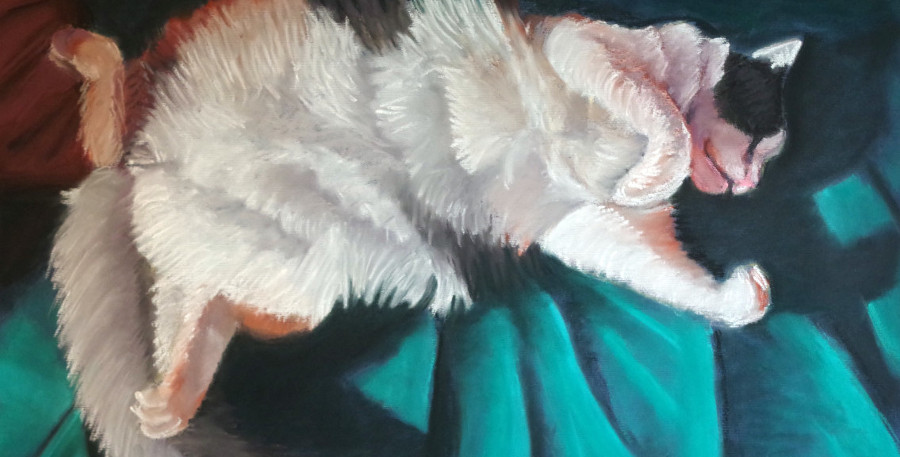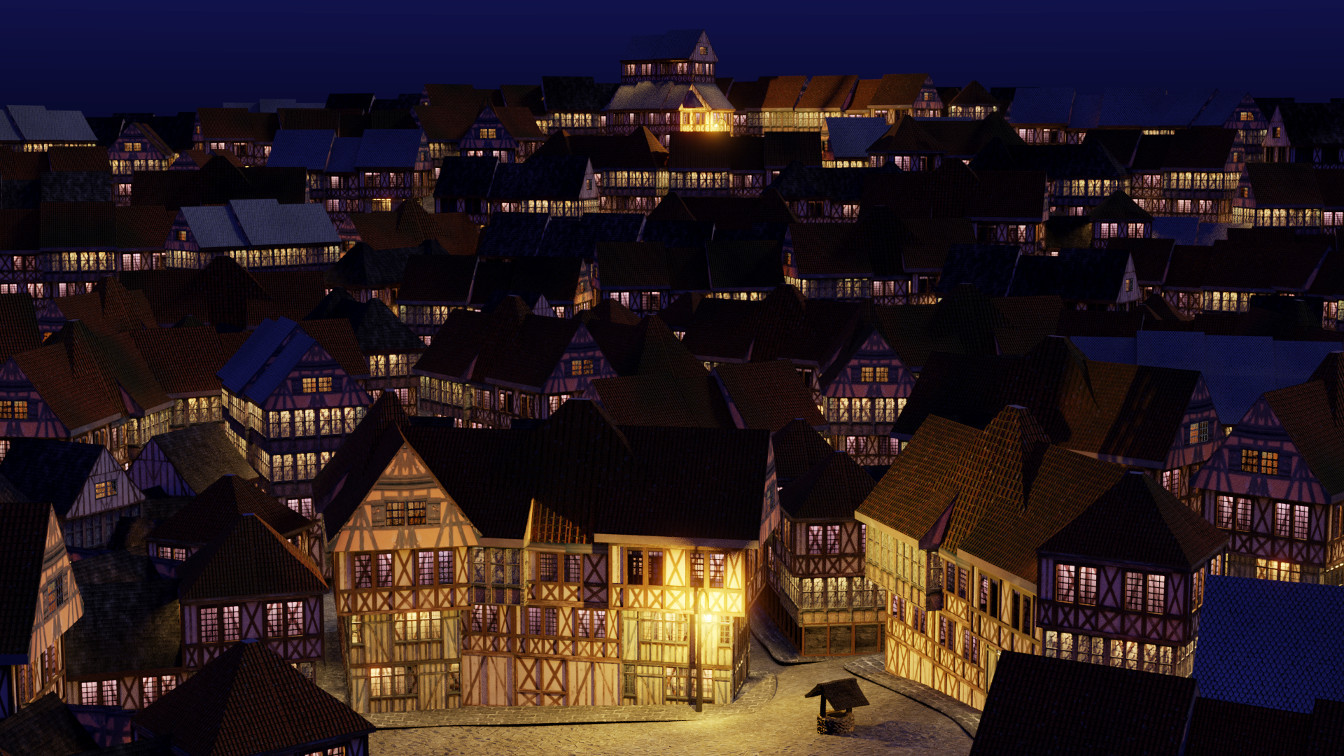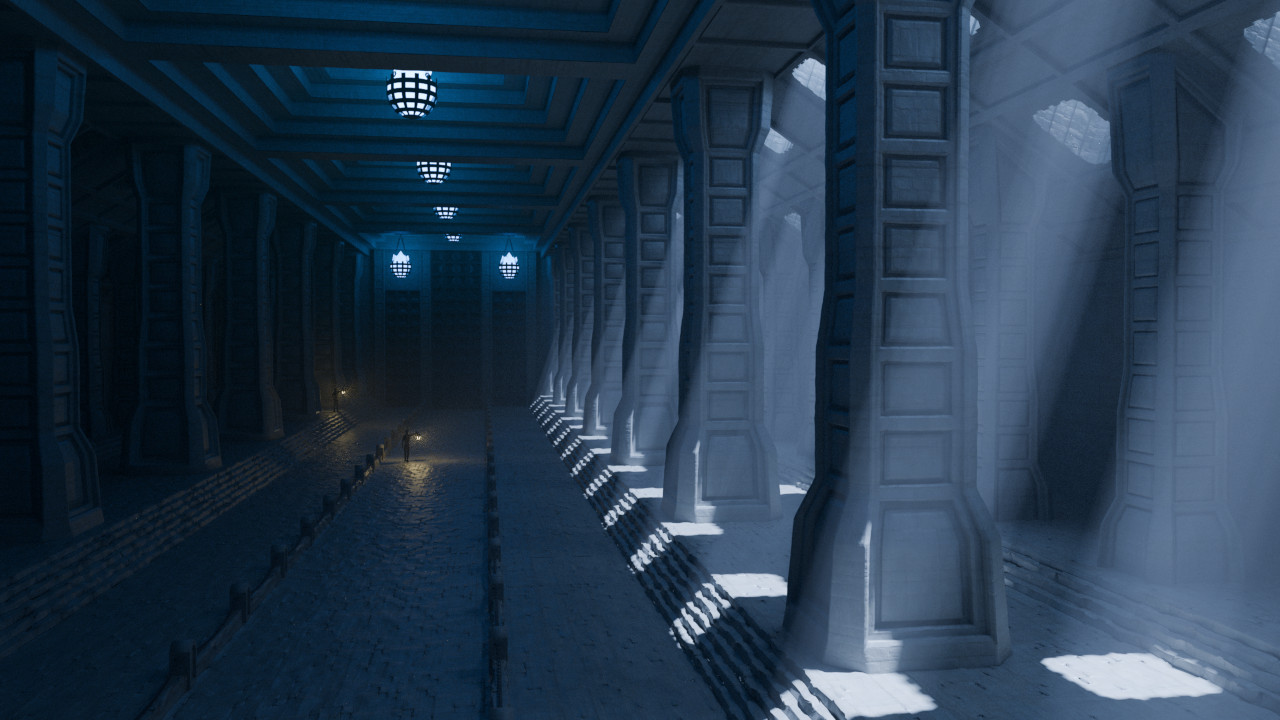Passions & Interests
A few years ago I adopted the habit of practicing a personal activity every day, or at least once a week when I’m busy. I regularly go back and forth between pursuing new interests and rekindling old passions, but whatever the topic I always practice with dedication.
The passion I originally had for drawing quickly grew to computer graphics, which in turn is the reason why I discovered computer programming. Following a stint in China in 2019, I have also been working hard on learning Chinese.
Fine Arts
I have always been fond of drawing but was not very disciplined when in middle and high school. Once a student at École polytechnique, I adopted a more regular practice by joining the fine arts association. I then spent most of my time experimenting and trying to use colors, and had a hard time finding a technique which suited me. I then didn’t manage to make much of oil pastel and oil paint and was not convinced by acrylic. As a result, I didn’t improve my skills much during this period, though I intend to give another shot at oil paint as the problem was not that the technique didn’t suit me, but rather that it requires some technicity which I need to take time to master.
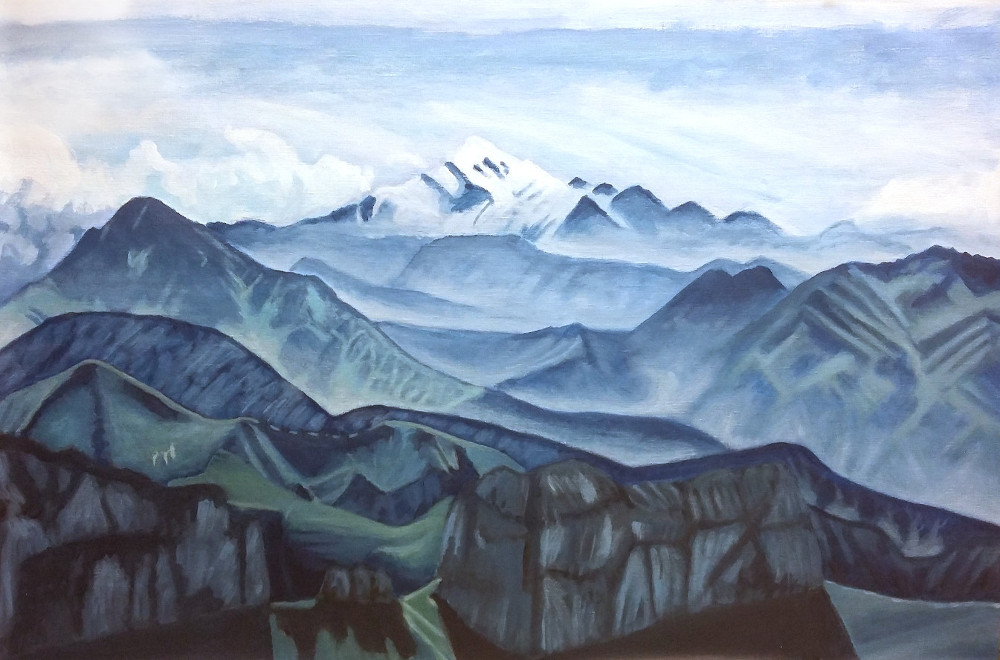
After my graduation, I discovered soft pastel and immediately became fond of this technique. It really feels like drawing, but with colors, and thus seemed very natural. It is also very easy to fix a mistake or blend colors, leading to a lot of freedom, and the only major drawback is the fragility of the result - I’m actually having a hard time storing my drawings.
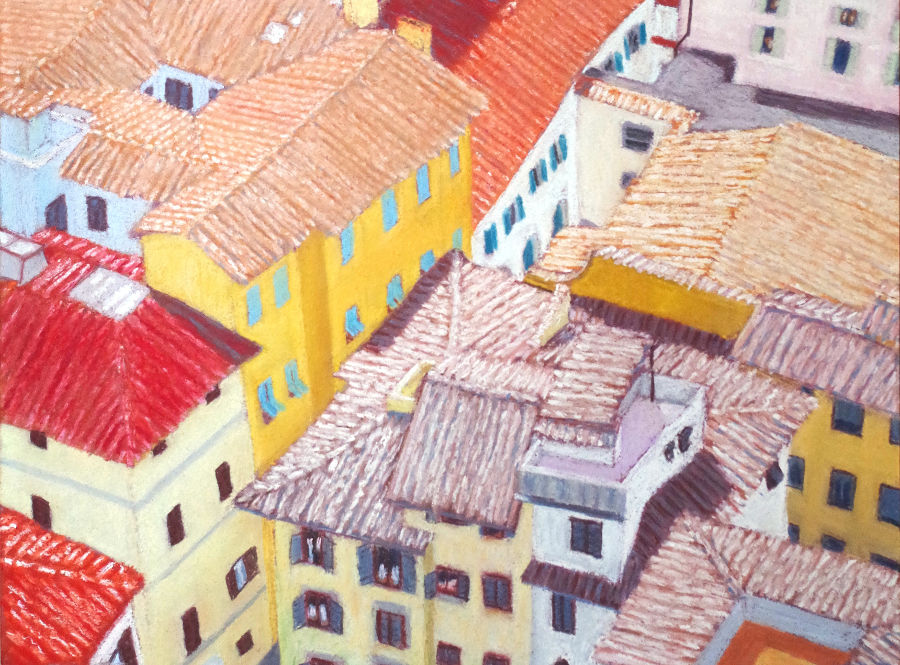
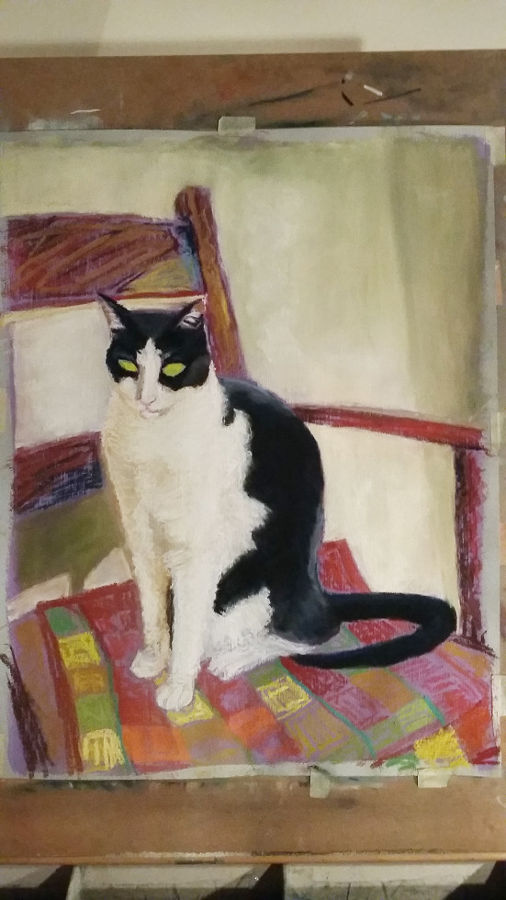
prepared with pumice stone powder
I often read that a good way of redoing part of a pastel drawing is to use an eraser. I'm not very fond of this technique, and prefer using a bruch with stiff hair. Using a brush is a lot more precise, allowing you to remove pastel exactly where you need to and thus without the risk of damaging the surrounding areas. It also works well at removing the excess of pastel once the paper has reached saturation. As all the layers of pastel powder blend a bit, by gently scratching the surface you can reveal one of the inner layers, which in practice is often similar to the top one. This allows you to desaturate the paper without destroying your work, leaving room for corrections.
I sometimes quickly sketch the model I'm drawing by using colored pencils, before working with pastels sticks. I once encountered the issue that depending on the pencils used, it is not always possible to cover their strokes with pastel. I now use pastel pencils whenever I need to do such sketches: as they are made from the same material (though more compact) than the sticks, they blend naturally.
When doing pastel, I love working with Sennelier's pastel card, but it may be expensive. I once found by luck a small stock of recycled paper for art, which proved perfect for pastel: the touch is very pleasant, it retains pastel well and has a very high level of saturation. Also, it is less abrasive than pastel card, thus preserving your pastel sticks. I also had a try at doing my own paper with powder of pumice stone, but it is not that easy to get a uniform result.
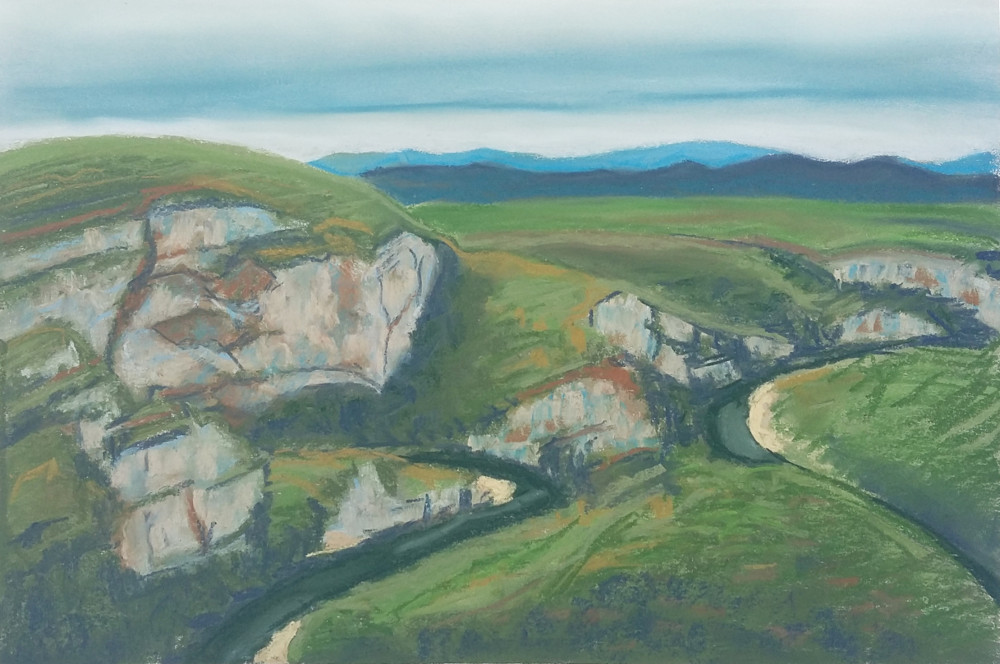
In parallel, I also explored techniques like ink or gouache. I didn’t spend as much time as I would have liked on gouache, but I like this technique a lot. Though the material is from my point of view not as beautiful and noble as oil, it is a very interesting technique because by drying fast it allows one to work quickly, and it gives interesting tranparency effects. Any mistake can also be reworked, contrary to watercolor for which you need to adopt a completely different philosophy by accepting the lack of control. Another advantage over pastel is that, gouache being a paint, you don’t need a huge collection of tubes to work because you can derive what you need by mixing pigments - you do the same with pastel, but directly on the canvas, making it more difficult to control the effect.
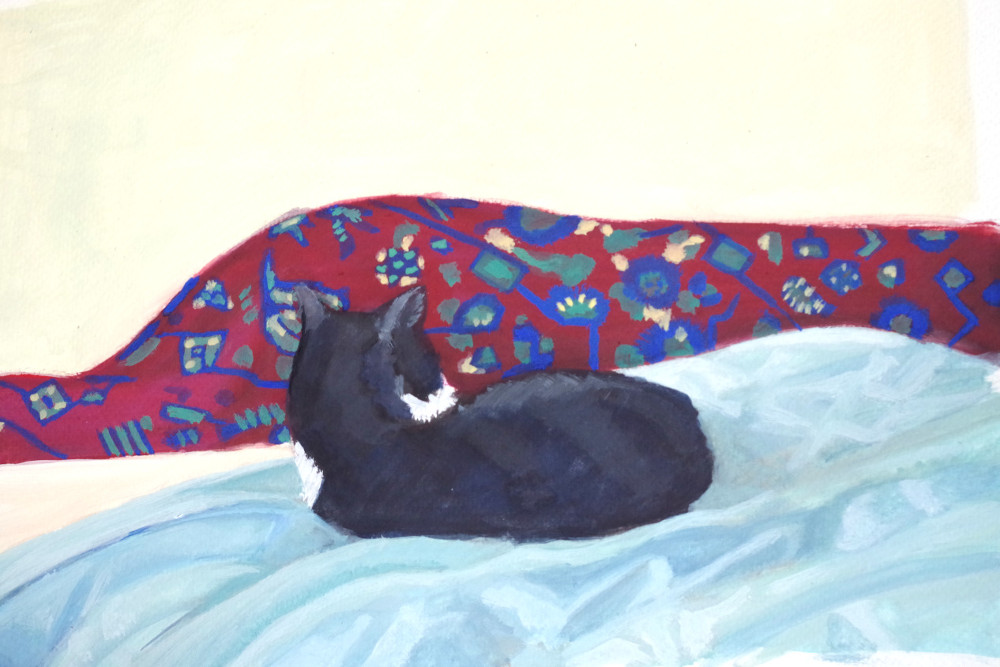
After a lot of practice with pastel I became hindered by my drawing skills, and decided to work on it it by progressively switching back to drawing without colors, or with only a few. I spent a lot of time playing with different types of pencil or even with felt pens. At some point, I particularly enjoyed sketching with pierre noire, because it produces interesting effects and allows me to work faster than with pencil. I also loved practicing the trois-crayons technique (3-pencils: pierre noire, sanguine, white, usually applied on a mid-tone paper), a technique dating from the 16th century, which was intensively used to make portraits (search for Jean-Étienne Liotard on the internet if you want to see the drawings of someone who mastered this technique).
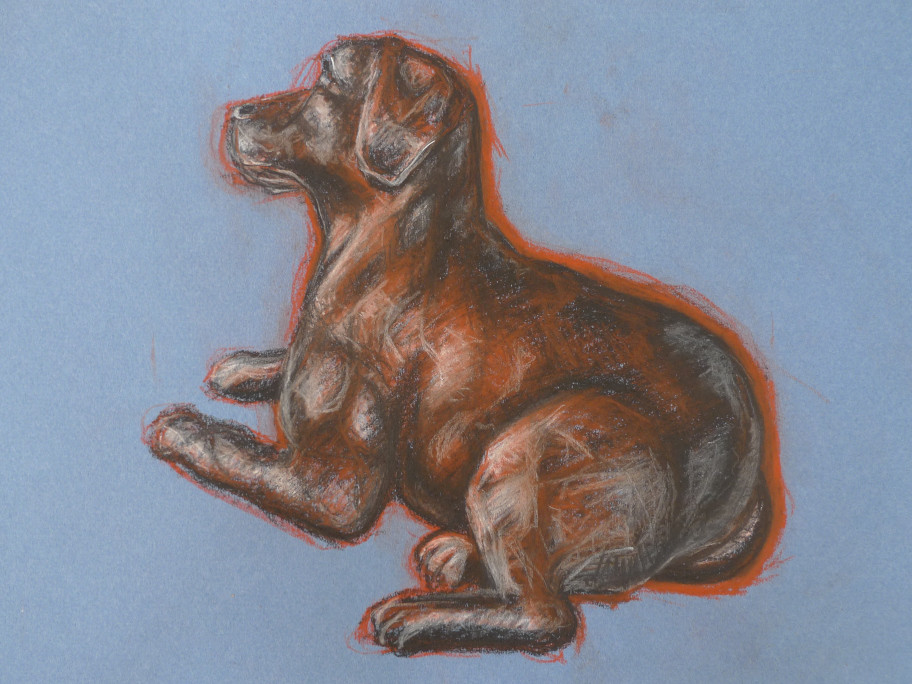
I generally work from a real model rather than from a photography, because it trains the ability to see in space and often leads to more lively results. It also has advantages, like the possibility of moving around, getting closer, seeing the model from a different perspective in order to comprehend it better. I particularly enjoy drawing from statues in museums, or going to the Jardin des Plantes to draw real, living animals. I either wait for them to repeatedly go to the same position when they wander around or circle in their enclosures, at which point I quickly add more strokes to my sketch, or just try to capture the idea of their movement when they move too much (damn monkeys…). I also love going to live model sessions in Montmartre or elsewhere, especially with friends.
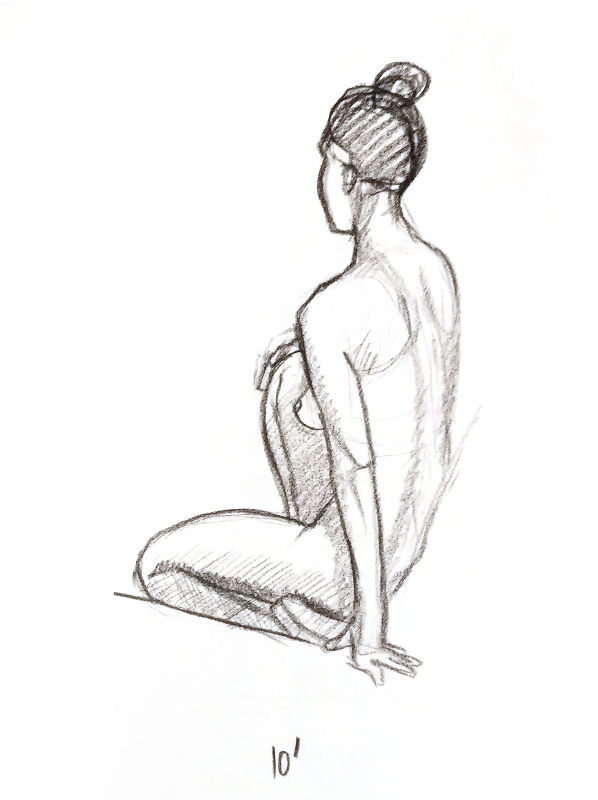
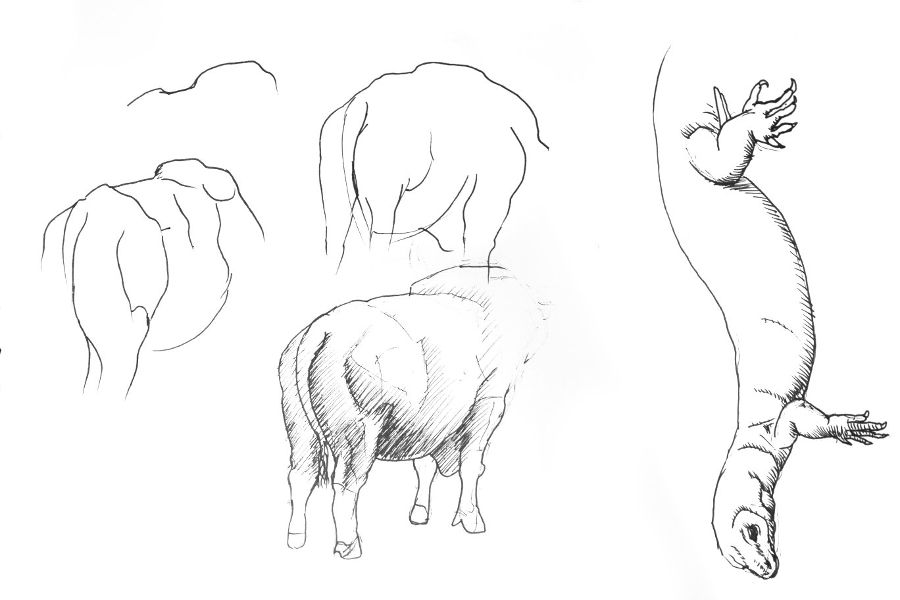
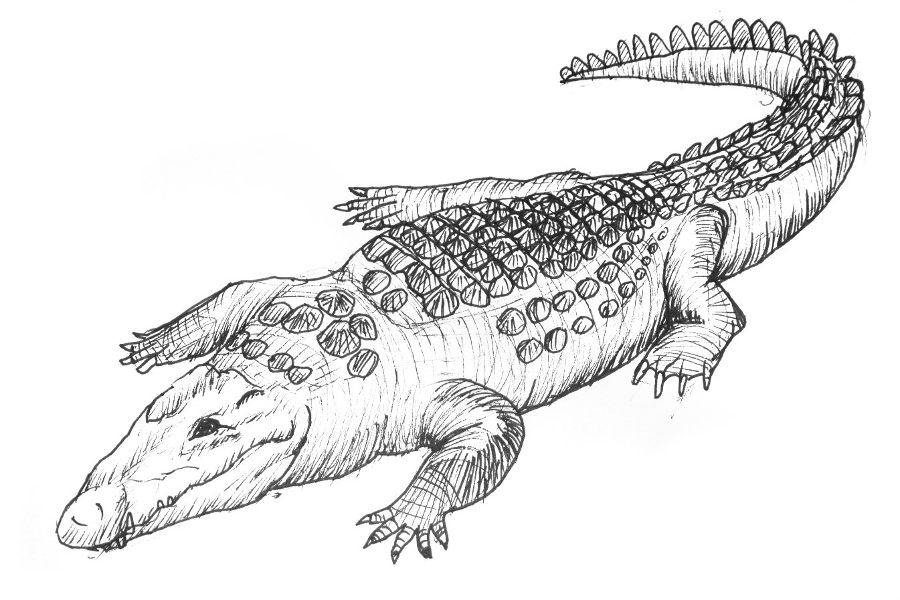
Lately, I’ve focused on drawing with simple pencils because it is very demanding. While you can easily get interesting effects with techniques like charcoal or pierre noire, pencils are very neutral and, in a way, lack personality. If you draw a stroke with pierre noire, the stroke is interesting in itself and can give strength to your drawing. On the contrary, there is nothing more boring than a pencil stroke. Using pencils thus takes more time and forces you to be extremely strict and rigorous, but on the other hand gives you a lot of control and leads to very subtle and interesting results. It also makes you learn a lot.
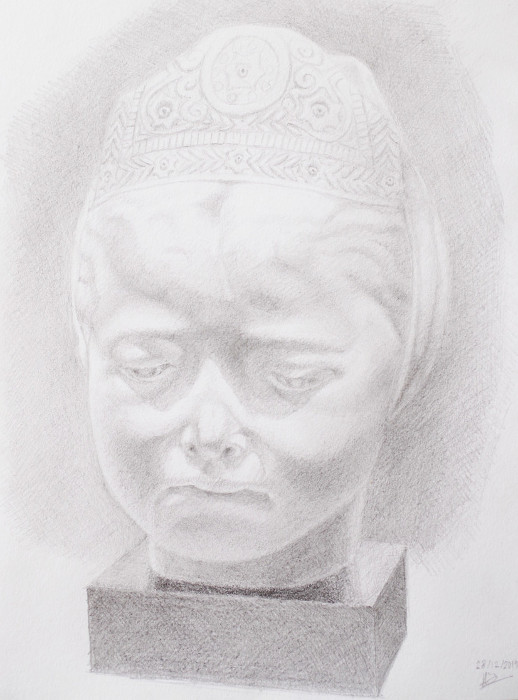
Whenever I need to buy art material, I go to Sennelier, at quai Voltaire in Paris, a historical store dating from 1887. Sennelier is also a brand, and a good one. The founder, Gustave Sennelier, had a training in chemistry and started his shop by creating his own colors for artists. Most of my pastel sticks are actually from there.
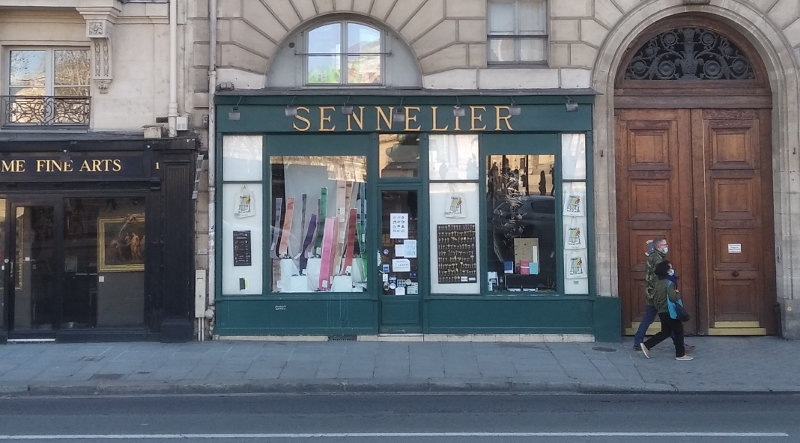
I particularly like the place because of its atmosphere, and whenever one of my friends wants to start drawing or painting I take she/him there to get her/him set up. The place is a bit of a mess, and immediately upon entering you only see piles and piles of art supplies from the floor to the ceiling. The shop is not big, but the selection is huge: it is more complete and diverse and actually cheaper than many other, bigger shops I went to. While I don't like shopping very much, I love going there just to "dig" and look for interesting things. Of course, I always end up buying something I didn't came for.
The people working there are also nice and know a lot about the products they sell, meaning they always give good advice whenever you need some. For me, going there is a bit like going to Shakespeare and Company for someone who loves English literature.
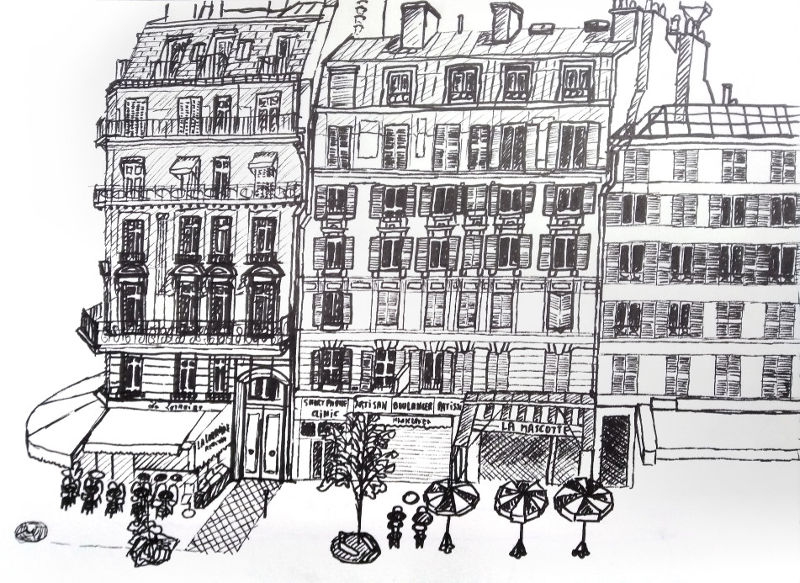
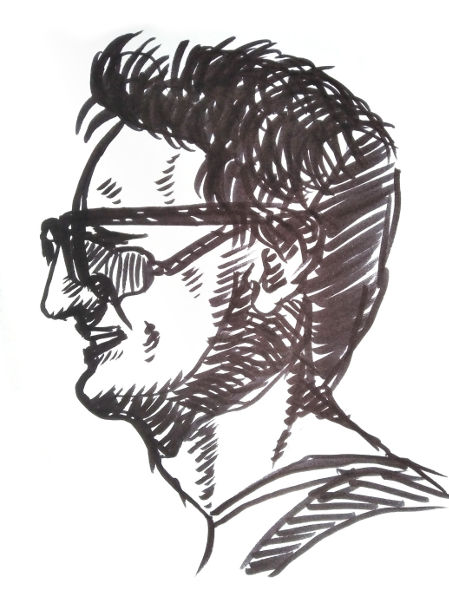
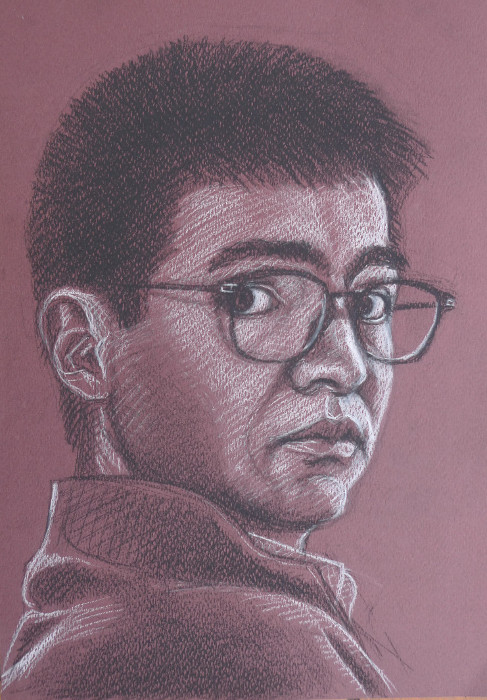
Computer Graphics
I used to do computer graphics when in high-school, and after a very long break, I recently hopped back on Blender to have a bit of fun.
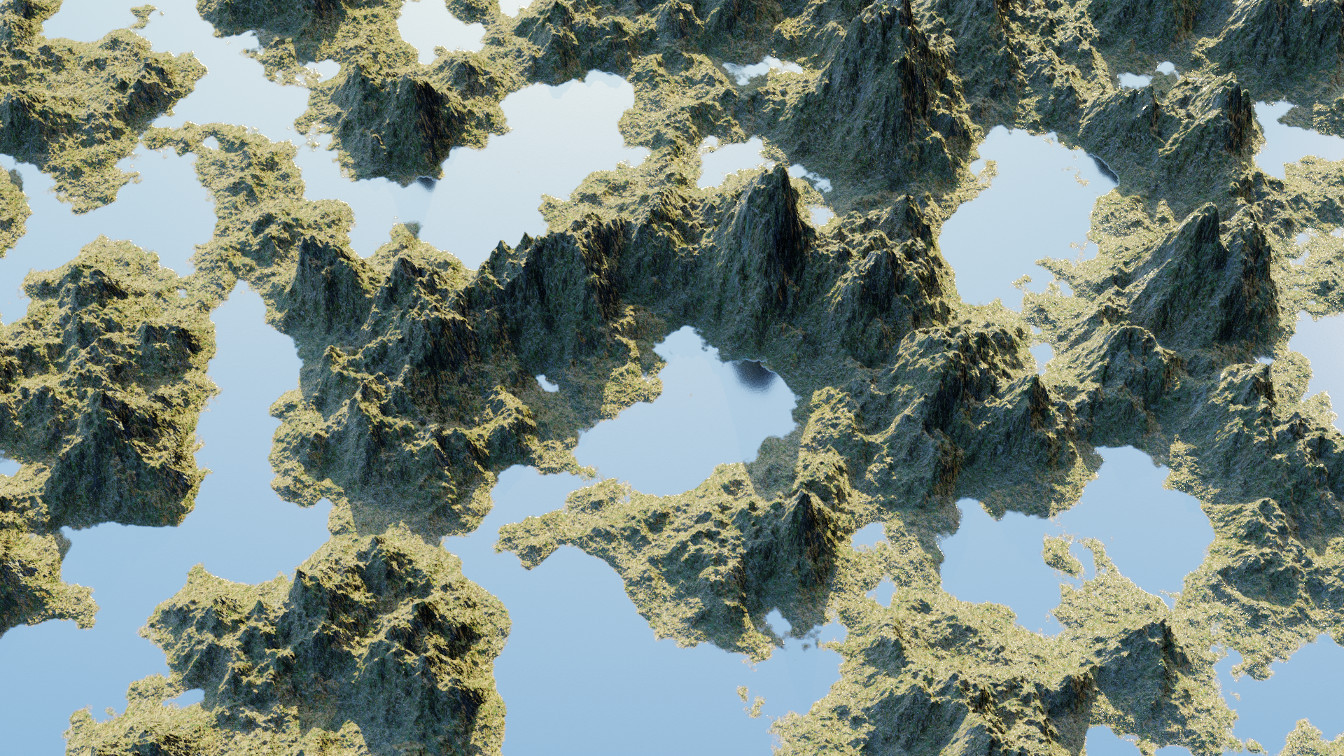
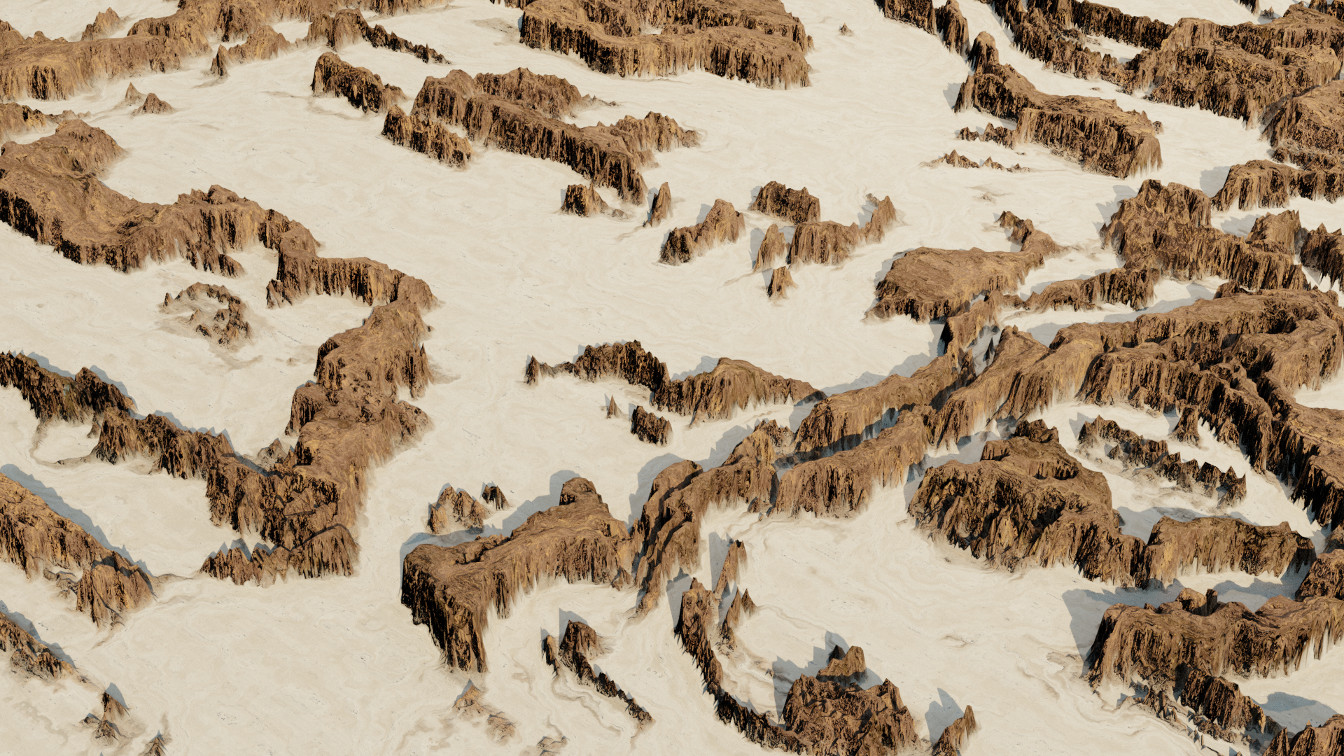
I particularly love playing with shader graphs to get interesting results. It reminds me of when I used to program shaders in C++ and HLSL while in high school.
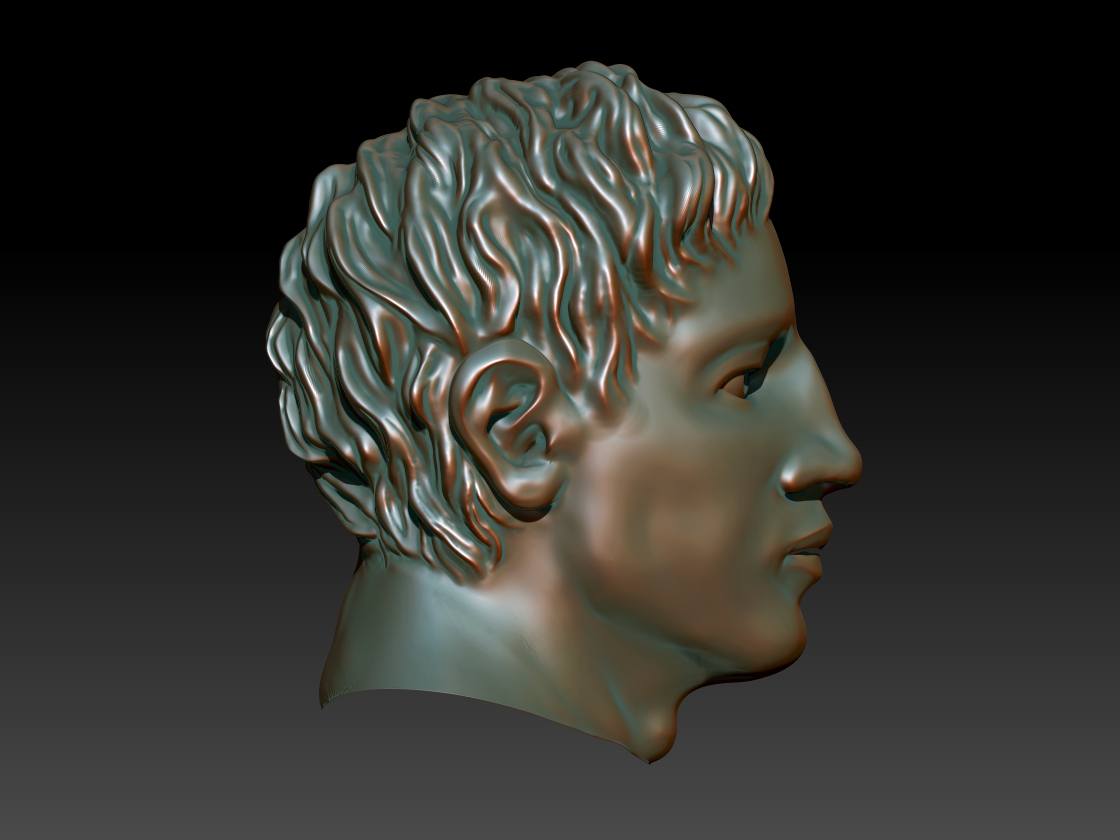
You can learn more about my experiments here or there.
Mandarin Chinese
I lived in Shanghai in 2019, which allowed me to discover the Chinese culture and more specifically the Chinese language. I fell in love with this language, and since then have been practicing with diligence.
One of the main reasons why I went to Shanghai is that I had then lived almost all my life in France, had the opportunity to do an internship abroad, and was looking for a radically different experience. China then seemed an obvious good choice, so I went. I initially hadn’t intended to learn Chinese because it is such a difficult language, until a friend who was also going to China convinced me to attend a Chinese class.

What I really loved about going to China is that the country and its culture are so different from what I had known, and there is so much to discover, that I was immediately destabilized. Every day brought its lot of discoveries and as a consequence felt quite different: one has a different perception of time, then. This feeling of discovery is also something I experienced by learning the language. Of course, we always learn things by practicing foreign languages, but in the case of Chinese, because the sentences and their meanings are expressed in such a radically different manner, I immediately had the feeling I needed to change my way of thinking whenever going from French to Chinese and vice versa.
For instance, the Chinese language can be imprecise: a lot depends on the context. As a result, translating from French to Chinese is doomed to fail from the very start. My Chinese teacher in Shanghai and I had countless discussions of the form:
- How would you say [some sentence] in Chinese?
- You would say [such and such].
- But this doesn't express the same thing at all. How would you preserve the meaning?
- Well, you can't.
It actually drove me a bit crazy at first, because to me all natural languages are Turing complete in a sense, meaning they should be able to express the same things, right?
A few words about the Mandarin grammar
Another simple example is the grammar. I’ve heard a lot that Chinese doesn’t have a grammar and I find this saying very wrong. It is not because a language doesn’t require to conjugate verbs that it doesn’t have a complex and subtle grammar, and I actually own a 400-page book just about this topic (this book).
Modifying the meaning
A good way to illustrate how different the grammar is to, say, the English grammar, is to look at the modifiers. It is for instance possible to modify a noun by adding information with the structural particle 的, written de in pinyin, the official romanization system for Mandarin Chinese. Note that pinyin uses accents to denote tones, but I will omit them for simplicity: see the dedicated section below for more explanations. For instance, in Chinese, “my friend” would be translated to the following, where I add spaces for the purpose of clarity (words are normally written stuck to each other):
我 的 朋友
wo de peng'you
"I [modifies] friend" --> i.e.: "my friend"
我 / wo is “me” or “I”, and 朋友 / peng’you means “friend”. The interesting point is that 的 really doesn’t express possession in the first place: in the previous sentence it simply expresses the fact that 朋友 / peng-you / “friend” is modified or characterized by 我 / wo / “me”. In this context, the sentence specifically means “my friend”. But unlike what happens in English, the Chinese sentence doesn’t use a possessive pronoun: 我 / wo / “me” modifies 朋友 / peng-you / “friend”, but 我的 / wo-de is not a possessive pronoun and does not mean “my”, strictly speaking.
Another interesting thing is that it is possible to use 的 to modify a noun with an adjective. For instance, you can use 好 / hao / “good” to characterize a friend:
好 的 朋友
hao de peng'you
"good [modifies] friend" --> i.e.: "(a) good friend"
You can even characterize this friend with the fact that you met her in Shanghai, in the sense that you became friend with her while there. This is a bit the equivalent of a relative clause:
我 在 上海 见过 的 朋友。
wo zai shang'hai jian'guo de peng'you.
"I in Shanghai meet [modifies] friend" --> i.e.: "The/a friend I met in Shanghai".
Here there is something else to notice, which is that the place (在上海/ zai shang’hai / “in Shanghai”) preceeds the verb (见过 / jian’guo / “meet”). Putting the subject aside (我 / wo / “I”), in Chinese we start with the background (time then place) then talk about the details (action, etc.).
Looking at the verb itself, we can notice it is actually made of two parts. The first character 见 / jian means “to meet”. The second character 过 / guo expresses an experience like in: “once in my life I have been in China”. If you replace 过 with 了 / le, which expresses a change of situation and consequently often marks past actions, the meaning of the sentence changes:
我 在 上海 见了 的 朋友。
wo zai shang'hai jian'le de peng-you.
"The/a friend I saw in Shanghai". (say, I saw a friend when I went there last week)
Also, I explained above that we use 的 to modify nouns. There actually exists structural particles for verbs and adjectives, to describe the manner or degree: 得 / de and 地 / de. And we could go on and on and on like this…
Quantifying objects
One last fun thing I really want to mention about the grammar is the quantifiers: whenever you quantify an object (“one cat”, “two cats”, etc.) you have to use a quantifier between the number and the quantified object. For instance, “one” is 一 / yi, and “cat” is 猫 / mao. One wouldn’t simply say 一猫: a quantifier is missing. Generally speaking, it is possible to use 个 / ge:
一 个 猫
yi ge mao
"one [generic quantifier] cat"
We can however be more specific, and being specific helps us to be understood: the quantified noun can be ambiguous. For instance, 只 / zhi is used for animals:
一 只 猫
yi zhi mao
"one [quantifier for animals] cat"
For long objects like roads we can use 条 / tiao:
一 条 路
yi tiao lu
"one [quantifier for long objects] road"
It applies to fish, as most of them are long:
一 条 鱼
yi tiao yu
"one [quantifier for long objects] fish"
There is also a quantifier for something we hold with the hand: 把 / ba. For instance:
一 把 伞
yi ba san
"one [quantifier for objects held with the hand] umbrella"
Of course, this only scratches the surface.
A tonal language
Moving away from the grammar, the pronunciation is interesting. Chinese is a tonal language, meaning you constantly have to change your tone pitch when speaking: depending on the sound you pronounce, your voice has to go up, down or stay flat, and the way you do it does change the meaning. I omitted it above, but in pinyin we put accents on some letters to express the tones. For instance, I listed below a few Chinese words whose pronunciation varies only in the tone. You should follow the direction of the accents: the first one is flat, the second one goes up, etc.
逼 / bī / "to force" (someone to do something)
鼻 / bí / "nose"
笔 / bǐ / "pencil"
币 / bì / "money" (like in the Chinese currency "RMB": 人民币 / rén mín bì / "the people's money")
Note that above I actually listed the four Chinese tones, in order: first tone is flat, second tone goes up, third tone goes down then up, fourth tone goes down. When a Chinese speaker does pay attention to the tones, they really add musicality to the language. On my side, I have to admit I found them quite hard to accomodate at the beginning: it took me a while to stop nodding or at least moving my hand up and down to accompany the tones while speaking Chinese…
Speaking of pronunciation, the accent varies a lot with the place: even putting dialects aside, Northerners have a specific way of speaking Mandarin, Southerners have a (strong) southern accent, etc.
Chinese people also don't exclusively speak Mandarin, and a good example is given by Cantonese which people speak in the south. Actually, it seems that most people speak at least two languages. They speak Mandarin as it is the common langage and actually often designated as such (普通话 / pǔ'tōng huà / "common language"). But they also often speak a local language or dialect. For instance, Shanghaiese people speak Shanghaiese, people from Kunming speak Mandarin mixed with some Yunnan words and expressions, Cantonese people speak Cantonese, etc.
Writing Chinese
Who could talk about Chinese without mentioning the Chinese characters? There truly is beauty in a Chinese character, and a strong evocative power. This is especially striking when looking at traditional Chinese characters, that is to say characters from before the 1952 simplification in mainland China, and which are still used in some places like Taiwan. For instance, the traditional character for 学 / xué / “to learn” is 學. If we decompose it, we get:
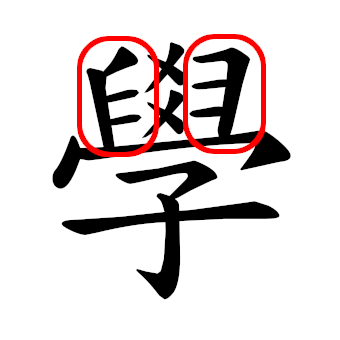
|
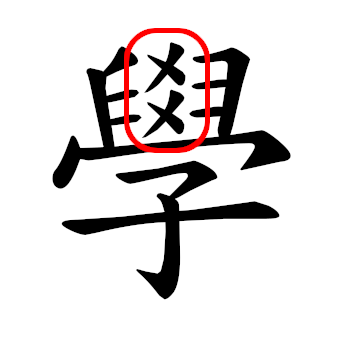
in the 易经 / i'jing / "Book of Changes" |
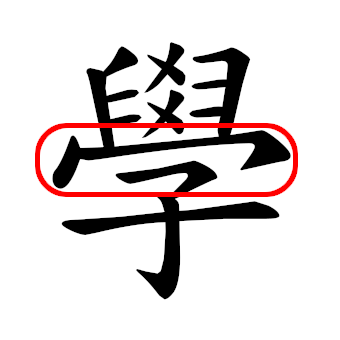
|
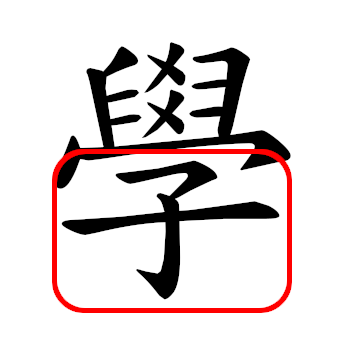
|
The whole character describes a child learning the hexagrams of the Book of Changes. It can actually be seen as forming the image of a child learning at their parents’ knees (ref).
I actually heard a different explanation for the character 學, in which 爻stands for the stars. This gives: learning is for a child to catch the stars with their hands. I could unfortunately not find any source supporting this interpretation but I like it, so I wanted to share it...
As illustrated with the example above, many Chinese characters can be decomposed into simpler ones. More specifically, it is often possible to decompose a character into a semantic component and a phonetic component. For instance, 青 / qīng expresses both green and blue and designates a (set of) color(s) typically found in landscapes, and consequently also found in paintings like the famous 山水 / shān’shuǐ / “mountain and water”. 青 is used in other characters which have a similar pronunciation, and from which I give a selection below:
- 情 / qíng / "(a) feeling" - 忄is a compact version of 心 / xīn / "heart"
- 请 / qǐng / "please" (ex.: "please open the door") - 讠is a compact version of 言 / yán / "word"
- 晴 / qíng / "fine" (about the weather) - 日 / rì is the "sun"
- 清 / qīng / "clear" (ex.: "a clear soup") - 氵is a compact version of 水 / shuǐ / "water"
Interestingly, some characters, when used as semantic components, often specifically identify words from a given lexical field. A simple example is 犭, the compact version of犬 / quǎn / “dog”, which often identifies animals:
- 狼 / láng / "wolf"
- 猪 / zhū / "pig"
- 猫 / māo / "cat"
- 狐狸 / hú'li / "fox" (you may have heard of 狐狸精 / hú'li'jīng, the fox spirits taking the shape of seductive women)
Similarly, Chinese people designate everything which looks like an insect, a worm or a reptile with 虫 / chóng, which is consequently used in the related characters:
- 蛇 / shé / "snake"
- 虾 / xiā / "shrimp"
- 蝴蝶 / hú'dié / "butterfly"
- 蜥蜴 / xī'yì / "lizard"
Our last example, the character 月 / yuè / “moon”, often identifies body parts:
- 脸 / liǎn / "face"
- 肚子 / dù'zi / "belly"
- 脑子 / nǎo'zi / "brain"
- 腿 / tuǐ / "leg"
- 脚 / jiǎo / "foot"
- ...
Once again, this only scratches the surface: there are many other ways of forming Chinese characters…
Some notes about learning Chinese
While it is easy to learn Chinese in China, I had to adapt a bit once I was back in France to build a proper learning environment. I try to practice regularly and focus on finding pleasant ways of learning, as this has proved to be the only way for me to stay motivated on the long term. For instance, I used to learn vocabulary with the flash card application Anki, but have stopped because learning vocabulary with flash cards is probably one of the most boring ways of learning a language. It can be extremely useful, when preparing for an examination for instance, but I find it hard to stay motivated on the long term. Exchanging with people in Chinese, at the opposite, is a lot more fun and quite effective to learn the language. For this reason, I really love doing tandems with Chinese partners (you find someone who wants to learn your language, and converse part time in your language, part time in the other person’s language). I also practice a lot by watching movies and series, and reading books.
About TV series, I started with 致我们单纯的小美好 (A Love so Beautiful). I’m usually not super fond of this kind of high-school romantic dramas, but this one had the easiest dialogues I could find, and the only ones I could understand without too much work back when I started watching series in Chinese, so I would recommend it for a start. Another easy series is 以家人之 名 (Go Ahead). This is also a high-school/university romantic drama, but I like it more than the one above. Regaring romantic dramas, the Taiwanese series 想見你 (Someday or One Day) is really good: it blends romance (less sweet than the ones above but maybe still a bit too sweet for my taste) with a murder mystery, time travelling, and a really good soundtrack (I still listen to some of the music!). The more complex plot makes this series slightly more difficult for language learners, but on the other hand it is actually a good series (I would actually recommend watching it even though you’re not learning Chinese), so staying motivated to learn is not hard. Also, it is quite short.
Among the other more interesting, but also more difficult, series, I recommend: 大江大 河 (Like a Flowing River) (about the China during the reform and opening up era), 三十而已 (Nothing But Thirty) (about what it means to be a 30 year old women in China and all the social pressure and challenges which come with it), and 玫瑰的故事 (The Tale of Rose) (this series follows the life of a young women as she finishes her bachelor and starts working). I totally recommend watching those series, even to people who are not learning Chinese: they are good series, and they are very interesting if you want to know more about China (Like a Flowing River and Nothing but Thirty in particular).
About books, I started reading in Chinese when I discovered the science fiction author Liu Cixin (刘慈欣), which I really loved. Since then, reading has proved to be my most efficient way of acquiring vocabulary. If you don’t know where to start, I recommend his short novel The Wandering Earth (流浪地球 - don’t watch the movie). As finding Chinese books can be difficult outside of China and importing them is quite expensive (note that there are several libraries selling Chinese books in Paris), I buy/download ebooks for my Kobo reader. Even online, I sometimes have trouble finding mainland books and thus often end up buying the Taiwanese version (i.e.: with traditional characters), but as I intend to learn calligraphy I guess it is for the best…
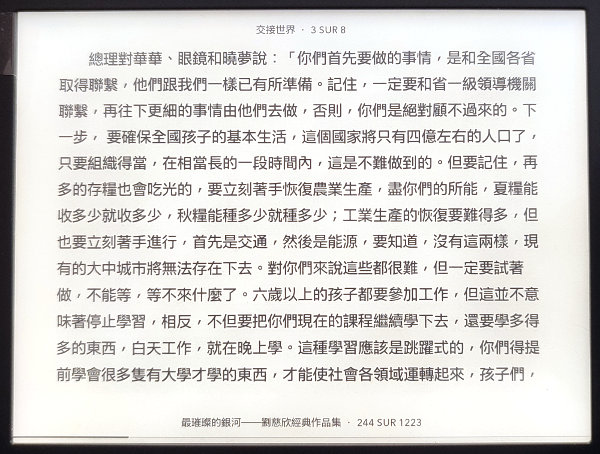
Among other books, I recommand:
- The Magician on the Skywalk (天橋上的魔術師). This is a collection of short stories by Taiwanese author Wu Ming-Yi (吳明益). Those stories happen in contemporary Taiwan (mostly in Taipei from what I remember) but contain a bit of magic and mystery, such as a magician whose tricks happen to actually be real magic, or a boy whose life goes through many hardships after he puts his hand in the mouth of lion statue at the entrance of a temple and says “eat, eat”.
- Running through Zhongguancun (跑步穿过中关村). This is also a collection of short stories happening in Beijing, by Chinese author Xu Zechen (徐则臣). Zhongguancun is a famous district in Beijing, close to many important universities like Beida and Qinghua.
Finally, I loved going to KTVs while in Shanghai, and ended up knowing a small repertoire of Chinese songs. All the people who ever learnt Chinese have learnt 月亮代表我的心 at some point, but there are others I like very much: 小幸运 (Little Happiness) (the first one I learnt, and still my favourite for this reason :) ), 愛人錯過 (Somewhere in Time) (more generally, I really like the group 告五人 / Accusefive), 平凡之路 (Ordinary Road) (I also really enjoy Pu Shu / 朴树’s songs), 陳奕迅 (Lonely Warrior) (this song was used in the series Arcane), 一生有你, 十年 (10 years), 童话 (Fairy Tale), 夜空中最亮的星 (Brightest Star in the Night Sky), 学猫叫 (Learn to Meow) (don’t ask why…), Superstar, 刚好遇见你 (Just Met You), 那些年 (Those Bygone Years).
